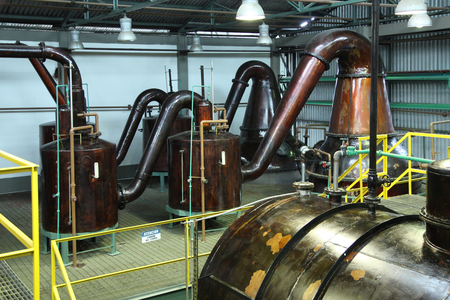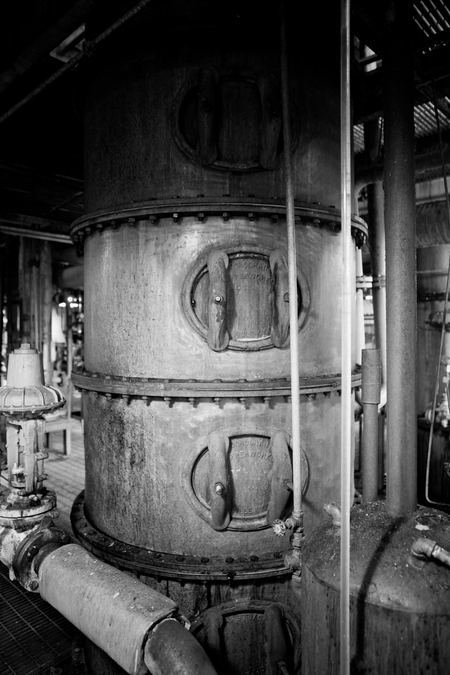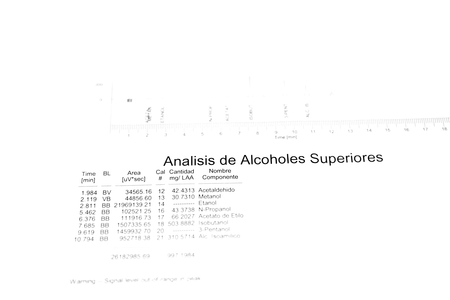
More about Destilerias Unidas S.A. (DUSA) - The Diplomatico Distillery
Established: 1959
Visitor Policy: Not generally accessible
Tel: Not supplied
Address
Venezuela
The plant covers 12 hectares and has a production capacity of some eight million 9-litre cases a year. Although chiefly a rum distillery, the facilities also house a self-contained grain processing plant and grain distillery as well as a separate gin distillery. DUSA distils from corn, rice, malted barley, molasses and sugar cane honey to make a wide range of products from liqueurs to whiskey and gin, in addition to rum. The local region provides a bountiful supply of cereals and even rice, with a government rice plant the distillery's immediate neighbour and the area's other major employer.

Tito Cordero
The whole operation is overseen by the erudite Tito Cordero who has worked at DUSA since 1988. He is only the third Master Blender to work at the distillery since it was founded in 1959. Prior to the distillery he worked in the petroleum industry and José jokingly says “I preferred the taste of alcohol to oil”. The truth is that it was not his love of rum that most influenced his career change, but the love of a woman. Tito met his wife while working at the petrochemical plant and she came from the area where the distillery lies, so the move to Lara provided him with both two loves of his life again something José told us with a smile.

RUM PRODUCTION
The rums produced at DUSA are made from sugar cane molasses and sugar cane honey, the molasses being used to make light rums and the sugar cane honey-heavy rums. Molasses arrive from the local sugar processing plants by tanker and are literally poured into the eight underground storage tanks with jointly have a total capacity of 16,000 metric tonnes.
DUSA seeks molasses with the highest sugar content possible but with a low ash content and low viscosity. The molasses they favour have a sugar content between 48% and 52%. In Venezuela sugar prices are set by central government and are so low that the processers can make more money by supplying DUSA with a high sugar content molasses than its removal for sale as processed sugar. Thus it is worth Venezuela's sugar refiners also producing sugar cane honey, something that is considered uneconomical by sugar cane processers in other countries. Venezuelan sugar cane honey typically has a 60% sugar content.
At a time when many rum producers are struggling to obtain molasses with a sugar content much above 45%, DUSA is very lucky to have such a ready supply of locally produced rich sugar cane honey.

Fermentation
Romana tanks (huge vats which sit on scales) are used to weigh the molasses (24 to 28 tonne batches) so that on the way to the fermentation tanks the correct amount of water and then yeast can be added to dilute the 75-82 brix sugar content to 18 brix.
DUSA cultivates and maintains its own proprietary yeast strain which was originally developed by Seagram's. A sample of this is used to start fermentation in a propagator with a small amount of diluted molasses. Oxygen is pumped in to ensure aerobic fermentation, and the yeast multiplies as it feeds on the glucose in the molasses. As the yeast cell count increases, more molasses are introduced and this starter fermentation is moved to the next tank. In all, DUSA uses four steps of propagation before the yeast count is sufficiently high to be introduced to the undiluted molasses in one of DUSA's 18 stainless steel fermentation tanks (Propagator plus four steps with the fourth being the fermentation tank.)

Of the 18 open-topped, 100,000 litre capacity fermentation tanks, 14 are reserved exclusively for rum production (the other four are used for fermentation of cereals). Air is pumped through the molasses at the start of fermentation from a pipe that runs around the base of each tank to ensure aerobic fermentation and the continued multiplying of yeast cells. Once the cell count is deemed to have reached sufficiently high numbers the air supply is cut to start anaerobic fermentation the yeast cells stop reproducing and start producing alcohol and carbon dioxide. As the yeast multiplies and ferments, it produces heat which is controlled by water-cooled pipes running around the inside edge of the tanks so that the temperature is held at 30-32°C.
DUSA controls the fermentation process, depending on whether the contents of the vat will go on to be used to make light or heavy rums. Light rums require a short fermentation, with 28 tonnes of molasses taking a maximum of 24 hours to ferment, so maximising the amount of alcohol produced. Conversely, heavy rums which are made from 24 tonne batches of sugar cane honey have an extended fermentation process of around 48 hours, so maximising congeners to provide character and flavour.

The fermentation of both molasses and sugar cane honey produces a dark beer-like wash with an alcohol level of 7-8% alc./vol.. Yeast is recovered from the ‘light rum wash’ using a centrifuge to be processed and recycled for use in subsequent fermentations. In contrast, yeast is not recovered from ‘heavy rum wash’ so is present during distillation (known as distillation on the lees).
Distillation
Both light and heavy rums are first distilled in column stills. Light rums emerge from this first distillation at 56% alc./vol. and heavy rums at 45% alc./vol.. Specific columns are used for the light and heavy rums. The residual water (vinasse) from the first distillation of both light and heavy rums is processed to a state where it can be used as fertiliser on DUSA's own sugar cane fields. Nothing is wasted.

The second distillation of heavy rums takes place in No.1 and No.2 stills both copper pot stills with two retort chambers. The shape of the lyne arm from these stills and the undulating copper pipes linking the retorts make these two stills look a little reminiscent of the Lock Ness Monster. The two retort chambers are charged with distillate from a previous distillation and these help achieve higher alcohol strength in the final distillate.

The first cut from heads to heart is after 15 minutes of the start of the run, at 92-93% alc./vol.. The cut to tales is at 69-70%, producing a distillate with a strength of 81-82% alc./vol.. DUSA disposes of heads and tails, some 24% of distillation, and they are not used in subsequent distillations as is common practice with most other rum distillers.

The second distillation of semi-heavy rums takes place in a batch kettle, known as still No. 700 (the six column stills are numbered 100 to 500 and a smaller batch kettle numbered ‘600’ is no longer used). The batch kettle, a huge copper cylinder lying on its side resembles the boiler of a steam engine and is heated by internal steam pipes. This is charged with 40,000 litres of wash which boils to send its vapours to the tall batch column for distillation, producing a distillate with a strength of 96.4% alc./vol..

The second distillation of light rums takes place in two more modern computer-controlled column continuous stills. These are of stainless steel construction with the top section of the second column being copper. The distillate produce has the same strength as the semi-heavy rums at 96.4% alc./vol. but a very different character.

Ageing
DUSA predominantly uses ex-bourbon barrels with some re-filled whiskey casks, but in recent years have experimented and introduced a small number of sherry butts. According to Venezuelan law, to be called rum the spirit must be aged for at least two years. The heavy alcohols which require the longest ageing, 4-12 years, are stored in the coolest parts of the warehouse while the lightest rums, stored for just over two years, will be placed in the warmer parts of the warehouse.

The lightest rums are barrelled at 65% alc./vol., semi-heavy rums at 55% alc./vol. and heavy rums at a low 50% alc./vol.. Due to the heat, DUSA experiences losses in volume during ageing of some 7-8% per year average (Angel's Share), but the high humidity means the loss of water and spirit are roughly even so the alcoholic strength remains fairly constant. Despite these losses the barrels are not topped up during the ageing process indeed, once filled, sealed and placed in the warehouse, the barrels are not moved or opened until they reach bottling maturity.
DUSA has 21 warehouses holding some 260,000 casks and to spread risk, stocks of different styles of rum and maturity are spread evenly across all the warehouses.


Bottling
DUSA bottles its own rums, including Diplomatico, in their on-site bottling hall so as they have their own sugar cane fields it is feasible that some of their production is 100 per cent estate rum. After blending and approval by both the tasting panel and the laboratory, the rums are hydrated with well water which has been demineralised by reverse osmosis and ionic interchange.
Diplomatico rums are given a very gentle filtration prior to bottling to maintain fatty acids and mouthfeel. The rums are chilled prior to filtration, but only to the distinctly tepid 0˚C, using 3 micron-thick filter pads. This is the merest filtration Tito considers necessary to ensure the rum remains clear and bright when exported to cold climates (though Blanco Reserva is also charcoal filtered).


































